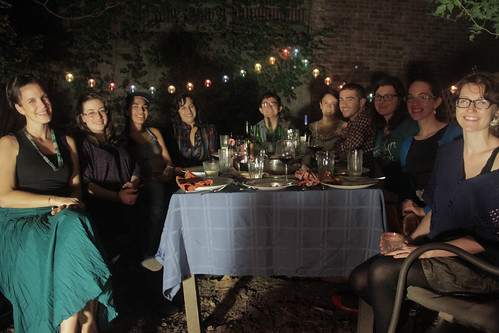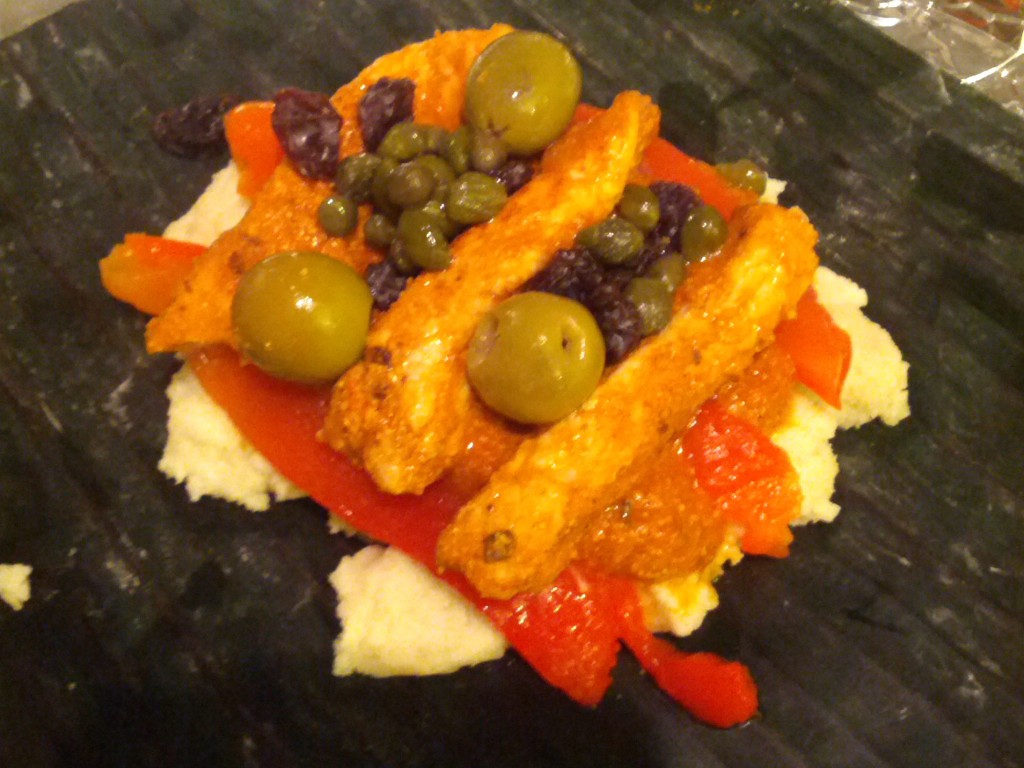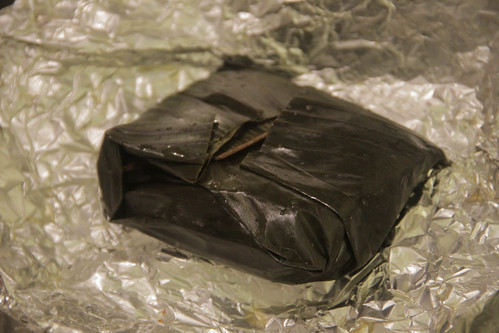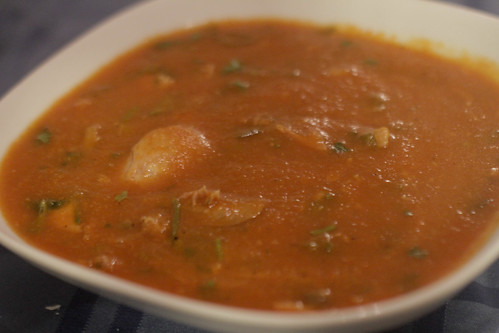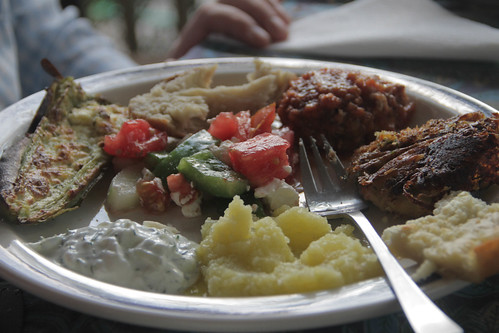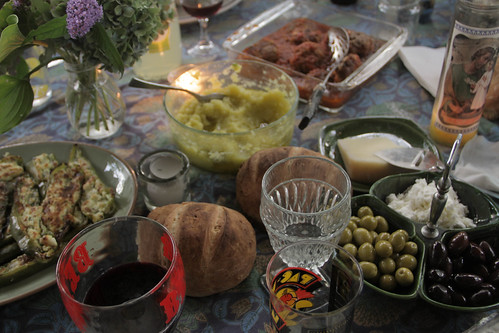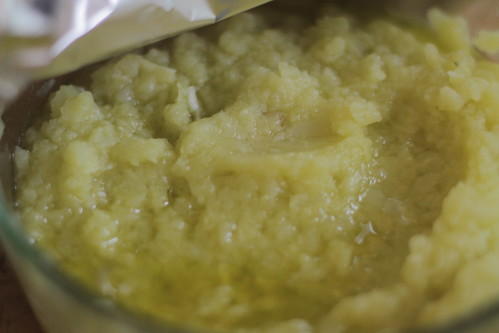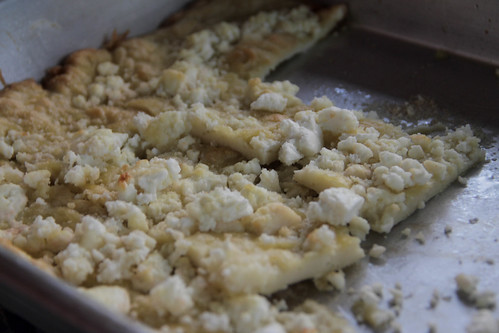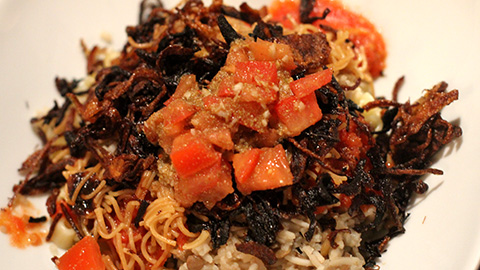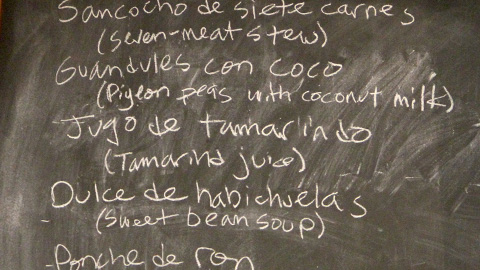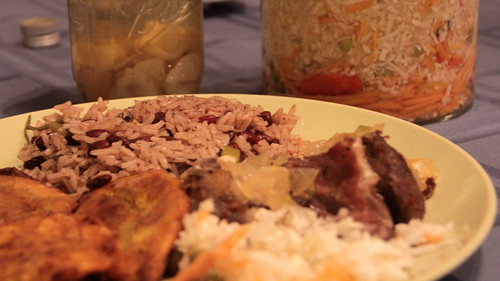 Have you ever pondered what would have happened if something went differently at a given point in history? Compared with the rest of the Western Hemisphere, Haiti is sort of a real-life example of contrarian history. The crux is a slave revolt against French colonial masters that, incredibly, led to independence in 1804. The slave system was ruthless and required a constant influx of slaves, which had the silver-lining consequence of a strong syncretic culture quickly developing that combined French and West African influences — ranging from language (Kreyol is mostly French vocabulary but has strong West African grammatical influence) to cuisine to religion.
Have you ever pondered what would have happened if something went differently at a given point in history? Compared with the rest of the Western Hemisphere, Haiti is sort of a real-life example of contrarian history. The crux is a slave revolt against French colonial masters that, incredibly, led to independence in 1804. The slave system was ruthless and required a constant influx of slaves, which had the silver-lining consequence of a strong syncretic culture quickly developing that combined French and West African influences — ranging from language (Kreyol is mostly French vocabulary but has strong West African grammatical influence) to cuisine to religion.

Our meal fell directly on fet gede, a Vodou celebration blending the Catholic traditions of All Souls' Day with West African-derived spirits and beliefs. To get into the mood, we made an altar with some of the traditional elements, including an offering of our own ancestors' favorite foods. The meal, while not unique to this holiday, is one that would be appropriate to the festivities, particularly because the spirits related to death love spicy food. To bring a little bit more of Port-au-Prince to Brooklyn, we turned out the lights and ate by candle, since most folks only get electricity a few hours a day, if any.
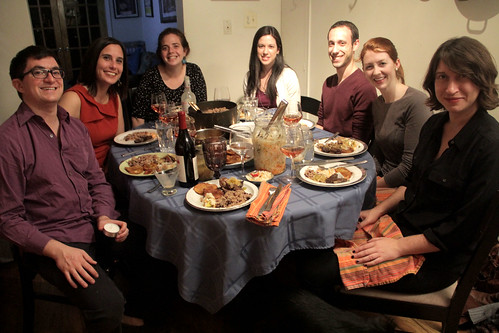
Joining us for this adventure were Lisa, Alex, Samantha, Johan, CJ, and Rachel. Alex spent a month in Haiti, whereas CJ recently lived there for a year.
Kremas | Rum cream | Recipe
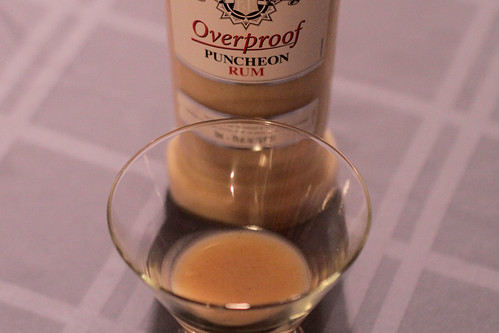
The drink par excellence for fet gede is pikan, hard liquor steeped with scotch bonnets. CJ brought some that she'd made for last year's, so you can imagine how pungent it was — all you need is the tiniest sip of this truly firey water.
For the rest of our Haitian-style drinking, we drank this cordial that's pretty much the opposite — an unctuous, sweet, spiced blend — with the only part in common is the alcoholic strength, thanks to being made with overproof rum. Between the spices (cinnamon, ginger, nutmeg) and the thickness of the liquids (condensed milk, evaporated milk, cream of coconut), this drink was quite reminiscent of eggnog, just a whole lot stronger. While all enjoyed the flavor, some found the thickness too heavy to indulge in more than a glass, but I quite happily managed to have several.
If you choose to follow this recipe, just note two things: you should use more than a quarter-cup of water to make the simple syrup, and this made two liters in total (and I only used a 750 ml bottle of rum, rather than 1L), so be prepared to give plenty of it away. Oh, and it's extremely important to look people in the eye when toasting. Goodness knows you don't want to get on the wrong side of the spirits.
Pikliz | Spicy pickled slaw | Recipe
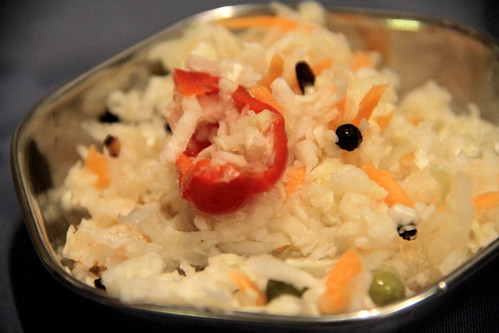
Growing up in California, taquerias were a core part of my childhood, and at some point my dad taught me the awesome trick of picking out the carrots from amongst the pickled japaleños at the salsa bar, to get the spice infused from the surrounding peppers while also getting more of the vinegar flavor. I feel like pikliz takes this concept to a marvelous extreme, with just a few extremely hot scotch bonnet peppers seasoning a whole jar of shredded cabbage, carrots, and whatever other veggies you throw in, by bathing together in spiced vinegar. And then there's whole cloves thrown in there to add a little more exotic flavor. I threw all the vegetables through the Cuisinart's shredding disc, but next time I would probably use the thin slicer for the cabbage to keep it in larger pieces.
Pikliz is such an essential part of the cuisine that everyone who'd been to Haiti whom I told about this meal asked if I'd be making it, and there's even an expat website called Pikliz.com. So, if you're doing a Haitian meal, don't leave this out, and be sure to start this a few days in advance to let that spice from the peppers migrate over to the vegetables! And then throw it on just about everything, as there's little on the Haitian table that won't go well with some vinegary crunch-n-spice.
Tasso cabrit | Fried goat | Recipe
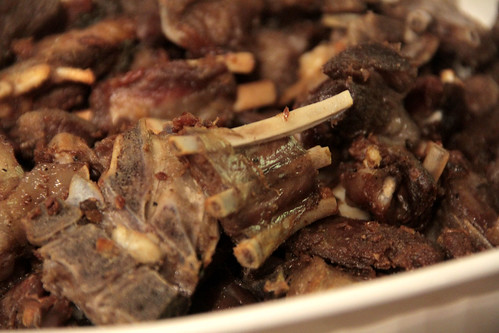
This was, hands down, the tastiest goat I've eaten in my life. What it's lacking in visual appeal, it way more than makes up in flavor and texture.
It started with a trip to the Fertile Crescent, where the butcher cut stew pieces of meat to order, including the super-tasty rib bits. Then to Bed-Stuy where I had to pop into a few markets to find the elusive sour orange, a green fruit with thick skin, a ton of square-ish seeds, and appropriately named flavor that's just excellent as a marinade. The night before the meal, I squeezed up the oranges, mixed with a bunch of other ingredients including lime, ground clove (there's that spice again!), hot peppers, etc.
Some recipes call for a simple vinegar marinade and then boiling with all the flavors; other call for a rich marinade and then a simple boil. I find it hard to let go of good flavors once you've got 'em, so the next afternoon I dumped the whole bowl, meat and marinade alike, into a pot, added water to cover, and then let that simmer for a good two hours or so. The recipes say to boil, but tough meat always enjoys slow heat, and my tweaks were vindicated by a really tasty and tender meat.
But wait, there's more! Once I finished frying up the plantains, I turned up the heat and threw the goat in the same oil, adding a lovely crisp to all the edges. Once served, these tasty chunks lasted approximately five minutes on the table. The only challenge was successfully navigating all the bones by candlelight!
Sauce Ti-Malice | Tomato and onion sauce | Recipe

This sauce is pretty much soupy sautéed onions with hints of other ingredients. I saw it mentioned on pretty much every site I visited, but I'm not sure I get it. The rest of the cuisine has such vibrant flavors and textures, while this came across as kinda bland and watery. Did I do something wrong?4
Diri ak pwa | Rice and beans | Recipe
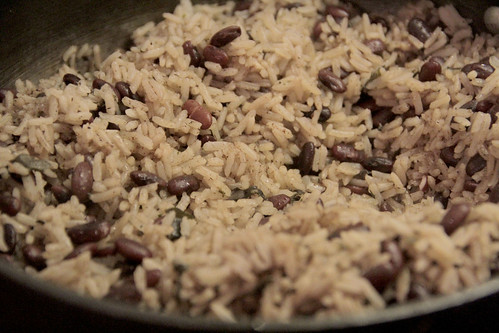
Doesn't that look like an exotic, perhaps African, name for this dish? Actually, it's the Kreyol transformation du riz au pois. Highlighting one face of the large American presence in Haiti, this recipe comes by way of a missionary.
I'm fascinated by how many ways there are to cook rice and beans. This one has you boil the beans (which I'd pre-soaked), adding some coconut milk and parsley toward the end, then re-introducing the bean broth and the beans and then finally the rice, with a heavy unlidded boil and then finally a slow simmer with the lid on. It was a lot of work and required a lot of attention, which proved quite worthwhile, with a great semi-moist texture on both the rice and the beans, and a nice richness thanks to the coconut milk. (I actually made coconut milk from scratch, by cracking, prying, and shredding coconuts, adding water to the shreds, and squeezing to extract the milk. Maybe that made a difference, but it was probably hardly worth it.)
I made a whole ton of it, using a pound of little red beans and five cups of rice; three nights of leftovers later and we've still got plenty left! Fortunately, it tastes great when crisped up in the frying pan with the addition of extra veggies and some pikliz!
Banan peze | Twice-fried green plantains | Recipe

For all the fried ripe plantains I've made, this was actually the first time I've fried the unripe version. Known as tostones or patacones in Spanish, these bananes pesées — weighted-down plantains — are fried once, smashed, and fried again. I can't find confirmation online, but my suspicion is that if the edges would burn before you managed to cook it all the way through, so smashing after the heat softens it makes all part of the slice close to the surface. Or maybe it's just that more surface area means more crispiness. Anyway, yum. Even though I have a deep-fryer, I made these in a frying pan so I could get more of these flat things going at a time.
Bonbon siwo | Molasses cake | Recipe
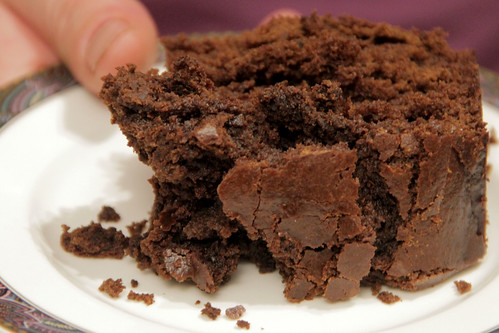
This cake-like dessert can be pretty honestly described as a fluffy brownie, but with molasses and spices instead of chocolate. I thought it was OK, but on the dry side. (The first recipe I found called for a ridiculous four sticks of butter, whereas this one has one stick, perhaps the truth and beauty lies somewhere in between.) However, it was an excellent supporting actor for a scoop of the nutmeg ice cream left over from the Grenada meal!

Post-dinner lingering, by candlelight
